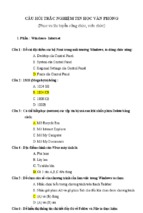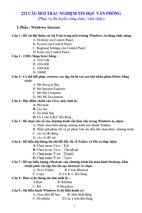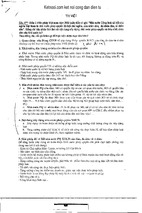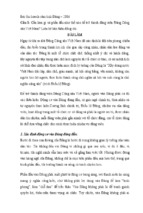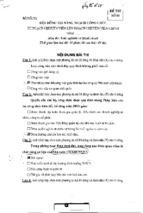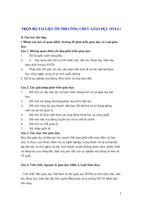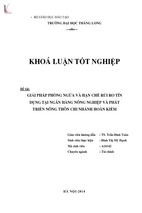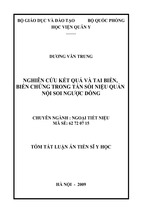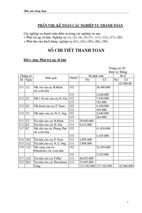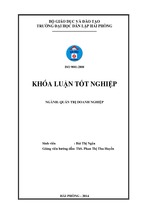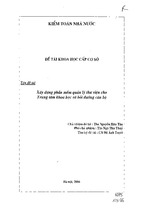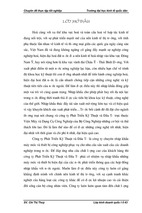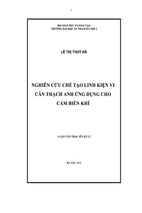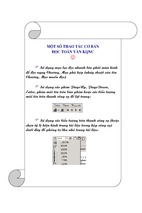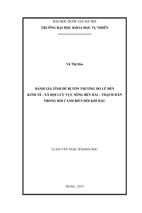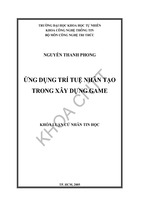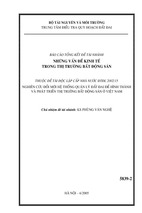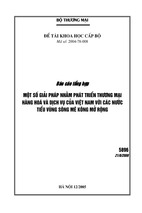This new edition of the book is more than the usual update of information and references. In response to recent developments in cognitive linguistics we have made some major changes and have introduced new topics extending the number of chapters from six to seven. Our presentation of conceptual categorization has become more differentiated. With regard to individual categories, the notion of contextdependence has been strengthened. The presentation of cognitive models and cognitive hierarchies now emphasizes the importance of partwhole links as opposed to typeof relationships.
Cognitive linguistics explores the idea that language reflects our experience of the world. It shows
that our ability to use language is closely related to other cognitive abilities such as categorization,
perception, memory and attention allocation. Concepts and mental images expressed and
evoked by linguistic means are linked by conceptual metaphors and metonymies and merged
into more comprehensive cognitive and cultural models, frames or scenarios. It is only against
this background that human communication makes sense. After 25 years of intensive research,
cognitive-linguistic thinking now holds a firm place both in the wider linguistic and
cognitive-science communities.
AN INTRODUCTION TO
COGNITIVE LINGUISTICS
Learning About Language is an exciting and ambitious series of introductions to fundamental
topics in language, linguistics and related areas. The books are designed for students of
linguistics and those who are studying language as part of a wider course.
An Introduction to Cognitive Linguistics carefully explains the central concepts of categorization, of
prototype and gestalt perception, of basic level and conceptual hierarchies, of figure and ground,
and of metaphor and metonymy, for which an innovative description is provided. It also brings
together issues such as iconicity, lexical change, grammaticalization and language teaching that
have profited considerably from being put on a cognitive basis.
The second edition of this popular introduction provides a comprehensive and accessible up-to-date
overview of cognitive linguistics:
•
•
•
•
•
•
It clarifies the basic notions supported by new evidence and examples for their
application in language learning
Discusses major recent developments in the field: the increasing attention paid to
metonymies, Construction Grammar, Conceptual Blending and its role in
online-processing
Explores links with neighbouring fields like Relevance Theory
Uses many diagrams and illustrations to make the theoretical argument more tangible
Includes extended exercises
Provides substantial updated suggestions for further reading.
ISBN 0-582-78496-4
UNGERER AND
SCHMID
Hans-Jörg Schmid is Professor of Modern English Linguistics at the University of Munich, where he
has also initiated the Interdisciplinary Centre for Cognitive Language Studies (ICCLS).
SECOND EDITION
Friedrich Ungerer is Professor of English Linguistics at the University of Rostock, Germany.
9 780582 784963
www.pearson-books.com
ungerer_aw.indd 1
19/7/06 10:56:56
UngererFMv3.QXD 8/10/06 2:19 AM Page i
An Introduction
to Cognitive
Linguistics
UngererFMv3.QXD 8/10/06 2:19 AM Page ii
Learning About Language
General Editors:
Geoffrey Leech & Mick Short, Lancaster University
Already published:
Analysing Sentences (2nd edition) Noel Burton-Roberts
Words and Their Meaning Howard Jackson
An Introduction to Phonology Francis Katamba
Grammar and Meaning Howard Jackson
An Introduction to Sociolinguistics (2nd edition) Janet Holmes
Realms of Meaning: An Introduction to Semantics Th. R. Hofmann
An Introduction to Psycholinguistics (2nd edition) Danny D.
Steinberg and Natalin V. Sciarini
An Introduction to Spoken Interaction Anna-Brita Stenström
Watching English Change Laurie Bauer
Meaning in Interaction: An Introduction to Pragmatics Jenny
Thomas
An Introduction to Cognitive Linguistics (2nd edition) Friedrich
Ungerer and Hans-Jörg Schmid
Exploring the Language of Poems, Plays and Prose Mick Short
Contemporary Linguistics: An Introduction William O’Grady,
Michael Dobrovolsky and Francis Katamba
An Introduction to Natural Language Processing Through
Prolog Clive Matthews
An Introduction to Child Language Development Susan
Foster-Cohen
The Sounds of Language: An Introduction to Phonetics Henry
Rogers
An Introduction to Foreign Language Learning and Teaching
Keith Johnson
Varieties of Modern English Diane Davies
Patterns of Spoken English Gerald Knowles
The Earliest English Chris McCully and Sharon Hilles
UngererFMv3.QXD 8/10/06 2:19 AM Page iii
An Introduction
to Cognitive
Linguistics
Second Edition
Friedrich Ungerer
Hans-Jörg Schmid
UngererFMv3.QXD 8/10/06 2:19 AM Page iv
PEARSON EDUCATION LIMITED
Edinburgh Gate
Harlow CM20 2JE
United Kingdom
Tel: +44 (0)1279 623623
Fax: +44 (0)1279 431059
Website: www.pearsoned.co.uk
First published 1996
Second edition published in Great Britain in 2006
© Addison Wesley Longman Limited 1996
© Pearson Education Limited 2006
The rights of Friedrich Ungerer and Hans-Jörg Schmid to be identified as authors of this work
has been asserted by them in accordance with the Copyright, Designs and Patents Act 1988.
ISBN-13: 978-0-582-78496-3
ISBN-10: 0-582-78496-4
British Library Cataloguing in Publication Data
A CIP catalogue record for this book can be obtained from the British Library
Library of Congress Cataloging in Publication Data
An introduction to cognitive linguistics / Friedrich Ungerer & Hans-Jörg Schmid. -- 2nd ed.
p. cm.
Includes bibliographical references and index.
ISBN-13: 978-0-582-78496-3 (pbk.)
ISBN-10: 0-582-78496-4 (pbk.)
1. Cognitive grammar. I. Ungerer, Friedrich. II. Schmid, Hans-Jörg.
P165.159 2006
415--dc22
2006040863
All rights reserved; no part of this publication may be reproduced, stored in a retrieval system,
or transmitted in any form or by any means, electronic, mechanical, photocopying, recording,
or otherwise without either the prior written permission of the Publishers or a licence permitting restricted copying in the United Kingdom issued by the Copyright Licensing Agency Ltd,
90 Tottenham Court Road, London W1T 4LP. This book may not be lent, resold, hired out or
otherwise disposed of by way of trade in any form of binding or cover other than that in
which it is published, without the prior consent of the Publishers.
10 9 8 7 6 5 4
10 09 08 07 06
3
2
1
Set by 71
Printed and bound in Malaysia
The Publisher’s policy is to use paper manufactured from sustainable forests.
UngererFMv3.QXD 8/10/06 2:19 AM Page v
Contents
Publisher’s acknowledgements
1
Preface to the second edition
vii
Typographical conventions
ix
Introduction
1
Prototypes and categories
7
1.1 Colours, squares, birds and cups: early empirical research
into lexical categories
1.2 The internal structure of categories: prototypes, attributes,
family resemblances and gestalt
1.3 Context-dependence and cultural models
2
Levels of categorization
2.1
2.2
2.3
2.4
2.5
3
Basic level categories of organisms and concrete objects
Superordinate and subordinate categories
Conceptual hierarchies
Categorization and composite word forms
Basic level categories and basic experiences: actions,
events, properties, states and locations
Conceptual metaphors and metonymies
3.1 Metaphors and metonymies: from figures of speech to
conceptual systems
3.2 Metaphors, metonymies and the structure of emotion
categories
3.3 Metaphors as a way of thinking: examples from science
and politics
3.4 Thinking in metonymies: potential and limitations
4
x
Figure and ground
4.1 Figure and ground, trajector and landmark:
early research into prepositions
4.2 Figure, ground and two metaphors: a cognitive
explanation of simple clause patterns
4.3 Other types of prominence and cognitive processing
7
24
45
64
64
76
85
92
101
114
114
132
144
154
163
163
176
191
UngererFMv3.QXD 8/10/06 2:19 AM Page vi
vi
CONTENTS
5
Frames and constructions
5.1 Frames and scripts
5.2 Event-frames and the windowing of attention
5.3 Language-specific framing and its use in narrative texts
5.4 Construction Grammar
6
Blending and relevance
6.1
6.2
6.3
6.4
7
Metaphor, metonymy and conceptual blending
Conceptual blending in linguistic analysis and description
Conceptual blending in advertising texts, riddles and jokes
Relevance: a cognitive-pragmatic phenomenon
Other issues in cognitive linguistics
7.1
7.2
7.3
7.4
Iconicity
Lexical change and prototypicality
Cognitive aspects of grammaticalization
Effects on foreign language teaching
Conclusion
207
207
218
230
244
257
257
268
280
288
300
300
312
321
328
343
UngererFMv3.QXD 8/10/06 2:19 AM Page vii
Preface to the second edition
This new edition of the book is more than the usual update of information
and references. In response to recent developments in cognitive linguistics
we have made some major changes and have introduced new topics
extending the number of chapters from six to seven.
Our presentation of conceptual categorization has become more differentiated. With regard to individual categories, the notion of contextdependence has been strengthened. The presentation of cognitive models
and cognitive hierarchies now emphasizes the importance of part-whole links
as opposed to type-of relationships.
The third chapter now provides an innovative description of the role
played by metaphors and metonymies based on the notion of ‘mapping
scope’. Generally metonymy has been given more prominence to accommodate recent research; the section on ‘Metaphor as a way of thinking’ has
been complemented by an additional section ‘Thinking in metonymies’c.
While Chapter 5 includes a section on ‘Construction Grammar’, a new
Chapter 6 has been inserted providing a careful introduction of blending
theory as an online processing strategy. The chapter includes many detailed
analyses of lexical and grammatical phenomena, and also of ads, riddles
and jokes. The last section of this chapter takes a look at ‘Relevance Theory’
exploring its potential to stimulate cognitive-linguistic approaches.
The final chapter of the book has almost doubled in size as two of the
four sections, the sections on iconicity and on cognitive linguistics in foreign language learning, have been massively expanded and now contain a
large amount of new material and original ideas.
The conclusion of the first edition has been reshaped into an ‘Outlook’
section which surveys some current attempts to put linguistic theorizing
on a safer psychological and neurological footing.
We are indebted to Maura Bresnan-Enders, Kirsten Buchholz, Eva
Drewelow, Sandra Handl, Susanne Handl, Nick Jacob-Flynn and Anne-Kristin
UngererFMv3.QXD 8/10/06 2:19 AM Page viii
Siebenborn for their invaluable assistance in checking and proofreading
manuscripts and generating the index. As the text of the first edition still
makes up a substantial part of this book we want to renew our thanks to
Ingrid Fandrych, Wolfgang Falkner, Nick Jacob-Flynn, Geoffrey Leech, Len
Lipka, Andreas Mahler, Arthur Mettinger and Kieran O’Rourke for their contributions to the success of the first edition.
F. Ungerer and H.-J. Schmid
Rostock and Munich, Summer 2006
UngererFMv3.QXD 8/10/06 2:19 AM Page ix
Typographical conventions
Cognitive categories, concepts,
cognitive and cultural models
small capitals
e.g. BIRD, VEHICLE,
Attributes
single quotes
e.g. ‘juicy’, ‘has legs’
Members of categories
arrows and small capitals
e.g. >ROBIN<, >PARROT<
Image schemas
single quotes
e.g. ‘in-out’, ‘part-whole’
Metaphors/metonymies
+ signs and small capitals
e.g. +ANGER IS HEAT+, +PRODUCER
PRODUCT+
LOVE, ON THE BEACH
Basic correlations
single quotes and arrows
e.g. ‘cause<>effect’,
‘action<>motion’
Frames
small capitals in brackets
e.g. [COMMERCIAL EVENT]
FOR
UngererFMv3.QXD 8/10/06 2:19 AM Page x
Publishers’ acknowledgements
The publishers are grateful to the following for permission to reproduce copyright material:
Elsevier Science Publishers B.V. for the ‘Smith brothers’ illustration from
page 269 of Sharon L. Armstrong, Lila R. Gleitman and Henry Gleitman
(1983) ‘What some concepts might not be’ Cognition 13; Georgetown
University Press for our Figures 1.4 (repeated as Figure 1.9), 1.5 and 1.6,
being Figures 5 and 7 from William Labov ‘The Boundaries of Words and
Their Meanings’, pp. 354 and 356 in Charles-James N. Bailey and Roger W.
Shuy, Editors, New Ways of Analyzing Variation in English (1973); Linguistic
Society of America and the author Ronald W. Langacker for our Figure 4.20,
being an adaptation of a diagram on p. 69 of ‘Nouns and Verbs’ which
appeared in Language 63 (1987); Pearson Education for two illustrations (our
Figure 1.12) of a ‘bungalow’ and ‘a typical English cottage’ from the fourth
edition of the Longman Dictionary of Contemporary English (LDOCE); Max
Niemeyer Verlag GmbH & Co. KG for our Figure 1.10, being Figures 4.10, 4.11
and 4.9 (pp. 151 and 152) in H.-J. Schmid’s Cottage and Co., start vs. Begin.
Die Kategorisierung als Grundprinzip einer differenzierten Bedeutungbeschreibung
(1993) and our Figure 1.17, being (12) on page 292 of Leonard Lipka’s
‘Prototype semantics or feature semantics: an alternative?’ in W. Lorscher
and R. Schulze’s (eds) Perspectives on language in performance. Studies in linguistics, literary criticism, and language teaching and learning. To honour
Werner Hullen on the occasion of his sixtieth birthday (1987); Stanford
University Press for our Figure 4.21, being an adapted composite of Figures
3.11 (p. 144) and 7.1 and 7.2 (p. 245) from Ronald W. Langacker’s
Foundations of Cognitive Grammar, Volume I: Theoretical Prerequisites (1987).
UngererFMv3.QXD 8/10/06 2:19 AM Page xi
Introv3.QXD 8/5/06 12:26 AM Page 1
Introduction
I
f someone says to you ‘Our car has broken down’, your reaction
may simply be to feel sorry. For the linguist, though, even such a
simple utterance calls for quite an elaborate explanation. As far as the meaning and the grammar of the sentence are concerned, a traditional description would try to paraphrase the meanings of the words used; it would analyze
the clause pattern (here a simple combination of subject and verb or predicate), and would probably go on to discuss the use of the present perfect tense.
Another approach involves asking language users to describe what is going
on in their minds when they produce and understand words and sentences.
As experiments have shown, people will not only state that a car has a boxlike shape, that it has wheels, doors, and windows, that it is driven by an
engine and equipped with a steering wheel, an accelerator and brakes, and
that it has seats for the driver and the passengers – more likely than not,
they will also mention that a car is comfortable and fast, that it offers mobility, independence and perhaps social status. Some people may connect the
notion of car with their first love affair, or with injury if they were once
involved in an accident.
By adding these attributes, people include associations and impressions
which are part of their experience. While the last two items (‘first love affair’,
‘injury’) point to a very personal, subjective experience, attributes like
‘comfort’, ‘speed’, ‘mobility’ and ‘independence’ seem to be part of our communal experience of cars. Taken together, the attributes collected from
laypersons seem to reflect the way we perceive the world around us and
interact with it. The wide and varied experience that we have of cars is also
helpful when it comes to identifying and naming car-like objects that we
encounter for the first time. For example, we do not hesitate to use the word
car for vehicles with only three wheels or strange-looking safari jeeps, because
Introv3.QXD 8/5/06 12:26 AM Page 2
2
AN INTRODUCTION TO COGNITIVE LINGUISTICS
we can compare them with the idea of a typical car we have stored in our
minds. In other words, a description that takes account of our experience
of the world – or more technically, an experiential view of words and
other linguistic structures – seems to provide a rich and fairly natural description of their meanings, and this is one of the goals of the cognitive-linguistic approach presented in this book.
Experiential aspects of meaning do not only emerge in experiments and
personal interviews. Our shared experience of the world is also stored in
our everyday language and can thus be gleaned from the way we express
our ideas. In order to open this mine, however, we have to go beyond the
‘logic’ of clause patterns and examine figurative language, especially
metaphors. Looking again at our initial example Our car has broken down,
it is evident that a car does not really break down just like a chair collapses
so that its parts come apart. Nevertheless the conceptual background of this
expression is clear enough. Since most of us do not know an awful lot about
cars and how they work, we use our knowledge of chairs or other equally
familiar objects collapsing to understand what happens when the car’s engine
suddenly stops working.
This transfer of our experience of well-known objects and events is even
more important where abstract categories like emotions are involved.
Imagine that someone describes the car owner’s reaction to the breakdown
of his car with the words Dad exploded. In order to get a full grasp of this
utterance and the notion of anger expressed, we will call up our knowledge
of actual explosions of gas stoves, fireworks and even bombs. This means
that we will make use of our experience of the concrete world around us.
Considering the wealth of observations, impressions and associations
underlying metaphors, it is not surprising that they have joined tests and
interviews as the second major basis of the experiential view of language.
Another important aspect of linguistic utterances concerns the selection
and arrangement of the information that is expressed. For example, consider the sentence The car crashed into the tree which might be a description
of the circumstances that led to the car’s breakdown. Visualizing the accident situation sketched in this example, you will probably agree that the
sentence seems to describe the situation in a fairly natural way. In comparison, other ways of relating the accident such as The tree was hit by the
car seem somehow strange and unnatural. The reason is that the moving
car is the most interesting and prominent aspect of the whole situation,
and therefore we tend to begin the sentence with the noun phrase the car.
What this explanation claims is that the selection of the clause subject is
determined by the different degrees of prominence carried by the elements
Introv3.QXD 8/5/06 12:26 AM Page 3
INTRODUCTION
involved in a situation. This prominence is not just reflected in the selection of the subject as opposed to the object and the adverbials of a clause,
but there are also many other applications of what may be called the
prominence view of linguistic structures.
The prominence view provides one explanation of how the information
in a clause is selected and arranged. An alternative approach is based on
the assumption that what we actually express reflects which parts of an event
attract our attention, and it can therefore be called the attentional view.
Returning once more to the road accident, the sentence The car crashed into
the tree selects only a small section of the event that we probably conjure up
in our minds: how the car started to swerve, how it skidded across the road
and rumbled onto the verge. Although all this happened before the car hit
the tree, it is not mentioned because our attention is focused on the crucial point where the path of the car ended, i.e. when the vehicle collided
with the tree, resulting in a severely damaged car and most likely causing
injuries to its passengers. Analyzing the sentence in terms of attention allocation, the attentional view explains why one stage of the event is expressed
in the sentence and why other stages are not.
The experiential, the prominence and the attentional view are three
interlocking ways of approaching language via its relation to the world
around us, which between them describe the core areas of cognitive linguistics. An additional aspect that has increasingly captured the attention of cognitive linguists is concerned with the mental processing of cognitive
input, and in particular with the online processing of our conceptualizations.
To add another example from the field of vehicles, consider the slogan of an
advertising campaign for a well-known brand of cars: Unleash a Jaguar.
Exploiting the origin of the brand name, this ad brings together ideas from
the two conceptual domains of cars and wild animals; it amalgamates them
into a powerful message suggesting an image of a car that is impatiently waiting for the customer, to be set free and allowed to act out its power, speed
and ferocity. This happens although the relationships between the wild animal domain and the car domain are not really clarified, let alone permanently
fixed. Technically speaking, the expression Unleash a Jaguar instructs the readers to simultaneously construct two ‘mental spaces’: a ‘car’ space containing
associations like powerful engine, high maximum speed, attractive design,
etc.; and a ‘wild animal’ space including associations normally attributed to
jaguars, such as their ferocity, speed of running, litheness and elegance. To
understand the message of the slogan, readers have to go through a process
of conceptually blending the two mental spaces, a process resulting in a
blended notion of ‘car-as-a-wild-animal’. With regard to its meaning, this
3
Introv3.QXD 8/5/06 12:26 AM Page 4
4
AN INTRODUCTION TO COGNITIVE LINGUISTICS
conceptual blend is somewhat vague and open-ended, and it is this quality
that is exploited in ads and many other text-types.
If these examples and their analysis have provided you with a first
impression of cognitive linguistics, you should perhaps now proceed to the
individual chapters of the book to find out more about the issues raised. The
remaining part of the introduction is primarily addressed to readers who are
already more familiar with cognitive linguistics and want to get a concise
overview of the topics dealt with in the book and their research background.
The first of the seven chapters will pursue the experiential view by looking at early psychological studies of cognitive categories (most of them
conducted by Eleanor Rosch), which led to the prototype model of categorization. This will take us to a discussion of attributes, family resemblances
and gestalts. Contrary to what one might assume, prototypes and cognitive
categories are not static, but shift with the context in which a word is used
and depend on the cognitive and cultural models stored in our mind.
The second chapter concentrates on the predominance of the ‘middle’
level of categorization, called basic level. It is argued that basic level categories for objects and organisms, such as DOG, RABBIT or KNIFE, are cognitively more important than either superordinate categories like ANIMAL or
CUTLERY or subordinate categories like GREYHOUND or PENKNIFE, but it will also
be shown that part–whole relationships like TABLE–KITCHEN–HOUSE–TOWN are
just as important for the organization of our mental lexicon as the typeof hierarchies (GREYHOUND–DOG–ANIMAL) traditionally focused on. The
notion of basic level categories can also be transferred from organisms and
objects to the domain of actions. For the description of properties, it competes with another cognitive notion, the image schema, which is rooted
in our bodily experiences.
Still within the framework of the experiential view, the third chapter
starts out from the conceptual potential of metaphors (which was first pointed
out by Lakoff and Johnson and has already been illustrated for the breakdown of the car). As a cognitive process it is understood as a mapping from
a source to a target concept monitored by a conceptual mapping scope.
Together with metonymies, conceptual metaphors make a significant contribution to the cognitive content and structure of abstract categories, especially emotion categories.
This view implies that metaphors and metonymies are no longer
regarded as ornamental figures of speech (as in traditional stylistics), but are
understood as important conceptual tools. The category-structuring power
of metaphors is not restricted to lexical categories, but can also contribute
Introv3.QXD 8/5/06 12:26 AM Page 5
INTRODUCTION
to our understanding of complex scientific, political and social issues, and
this is also true of metonymies, whose fundamental importance for human
thinking has only been gradually realized.
The fourth chapter is devoted to the prominence view. At the heart of
this approach lies the principle of figure/ground segregation, which has its
origin in the work on visual perception by gestalt psychologists. This principle is first applied to locative relations underlying prepositions like out or
over. Then it is extended to describe other syntactic relations, in particular
the prominence of subject versus object. The chapter ends with a rough sketch
of Langacker’s view of cognitive processes, which is shown to be based on
a multiple application of the figure–ground contrast.
In the fifth chapter the potential of the attentional view will be demonstrated. The chapter (which owes much to the ideas of Fillmore, Talmy and
Slobin) starts out from the notion of ‘frame’. Basically, a frame is an assemblage of the knowledge we have about a certain situation, e.g. buying and
selling. Depending on where we direct our attention, we can select and highlight different aspects of the frame, thus arriving at different linguistic
expressions. Although elementary types of frames, for instance the ‘motion
event-frame’, are presumably shared by all human beings, they are expressed
in different ways in different languages; this will be illustrated with English,
German, French and Spanish examples. Closely related to event-frames is the
notion of construction as a meaningful linguistic element, which, following
mainly Fillmore and Goldberg, is exemplified for verbal and nominal constructions as well as syntactic idioms.
The sixth chapter deals with the analysis of online cognitive processing,
as represented by Fauconnier and Turner’s theory of conceptual blending. This
approach is applied to a wide range of lexical, grammatical and pragmatic
phenomena as well as to ads, riddles and jokes to test its versatility. For example, it explains how we bring together information expressed in the headline of a print ad with the message of the picture by linking and blending
the mental spaces evoked by them. Finally, the blending theory and other
cognitive principles are related to some of the tenets of Sperber and Wilson’s
Relevance Theory, which is characterized as a cognitive-pragmatic approach
capable of stimulating cognitive-linguistic thinking.
The seventh chapter brings together a number of issues that have not
originated in cognitive-linguistic research. Although three of them, iconicity, lexical change and grammaticalization, can look back on a long tradition in linguistics, they have benefited considerably from being put on a
cognitive basis. The final section discusses the potential of a cognitive
5
Introv3.QXD 8/5/06 12:26 AM Page 6
6
AN INTRODUCTION TO COGNITIVE LINGUISTICS
approach to foreign language learning, focusing on the potential of basic
level, metaphor and metonymy, figure and ground as well as gestalt, to facilitate cognitive access to the language learning process.
To return to the general question of how ‘cognitive linguistics’ can be
understood, the book will focus on the experiential aspects and the principles of prominence and attention allocation underlying language. By
including cognitive online processing we want to emphasize the ties linking cognitive linguistics to psycholinguistic and pragmatic approaches.
UngeCh01v3.qxd 8/5/06 12:19 AM Page 7
CHAPTER 1
Prototypes and categories
1.1 Colours, squares, birds and cups: early
empirical research into lexical categories
The world consists of an infinite variety of objects with different substances, shapes
and colours. How do we translate this variety into manageable word meanings and
why do we succeed even where no clear-cut distinctions seem to be available, such as
between the colours ‘red’ and ‘orange’ or ‘green’ and ‘blue’? Experimental psychology
has shown that we use focal or prototypical colours as points of orientation, and
comparable observations have also been made with categories denoting shapes,
animals, plants and man-made objects.
Moving through the world we find ourselves surrounded by a variety of different phenomena. The most eye-catching among them are organisms and
objects: people, animals, plants and all kinds of everyday artefacts such as
books, chairs, cars and houses. In normal circumstances we have no difficulty in identifying and classifying any of them, and in attributing appropriate class names to them. However, it is not so easy to identify, classify
and, as a consequence, to name other types of entities, for instance parts
of organisms. Knees, ankles and feet of human beings and animals or the
trunk, branches and twigs of a tree belong to this type. It may be fairly
clear that one’s kneecap belongs to one’s knee and that the trunk of a tree
includes the section which grows out of the ground. Yet at which point
does one’s knee end and where does one’s thigh start? Where does a trunk
turn into a treetop and where does a branch turn into a twig? Similar problems arise with landscape names, and words denoting weather phenomena.
Who can tell at which particular spot a valley is no longer a valley but a
slope or a mountain? Who can reliably identify the point where drizzle turns
into rain, rain into snow, where mist or fog begins or ends?
When we compare the two types of entities mentioned, we find that
they differ with respect to their boundaries. Books, tables, cars and houses
UngeCh01v3.qxd 8/5/06 12:19 AM Page 8
8
AN INTRODUCTION TO COGNITIVE LINGUISTICS
are clearly delimited objects. In contrast, the boundaries of entities like knee,
trunk, valley and mist are far from clear; they are vague. This vagueness has
troubled philosophers and linguists interested in the relationship between
word meanings and extra-linguistic reality, and has given rise to various theories of vagueness’.* Yet in spite of their vagueness, we have the impression
that these boundaries exist in reality. A kneecap cannot be included in the
thigh, and a mountain top will never be part of a valley. So classification
seems to be forced upon us by the boundaries provided by reality.
However, there are phenomena in the world where this is not the case.
Take physical properties such as length, width, height, temperature and colours,
all of them uninterrupted scales extending between two extremes – how do
we know where to draw the line between cold, warm and hot water? And
how do we manage to distribute the major colour terms available in English
across the 7,500,000 colour shades which we are apparently able to discriminate (see Brown and Lenneberg 1954: 457)? The temperature scale and
the colour continuum do not provide natural divisions which could be compared with the boundaries of books, cars, and even knees or valleys.
Therefore the classification of temperature and colours can only be conceived as a mental process, and it is hardly surprising that physical properties,
and colours especially, have served as the starting point for the psychological
and conceptual view of word meanings which is at the heart of cognitive
linguistics. This mental process of classification (whose complex nature will
become clearer as we go on) is commonly called categorization, and its product are the cognitive categories, e.g. the colour categories RED, YELLOW, GREEN
and BLUE, etc. (another widely used term is ‘concept’).
What are the principles guiding the mental process of categorization and,
more specifically, of colour categorization? One explanation is that colour
categories are totally arbitrary. For a long time this was what most researchers
in the field believed. In the 1950s and 1960s, anthropologists investigated crosslinguistic differences in colour naming and found that colour terms differed
enormously between languages (Brown and Lenneberg 1954; Lenneberg
1967). This was interpreted as a proof of the arbitrary nature of colour categories. More generally, it was thought to support the relativist view of languages, which, in its strongest version as advocated by Whorf, assumes that
different languages carve up reality in totally different ways.2
A second explanation might be that the colour continuum is structured
by a system of reference points for orientation. And indeed, the anthropologists Brent Berlin and Paul Kay (1969) found evidence that we rely on
*Suggestions for further reading are given at the end of each chapter.
- Xem thêm -

